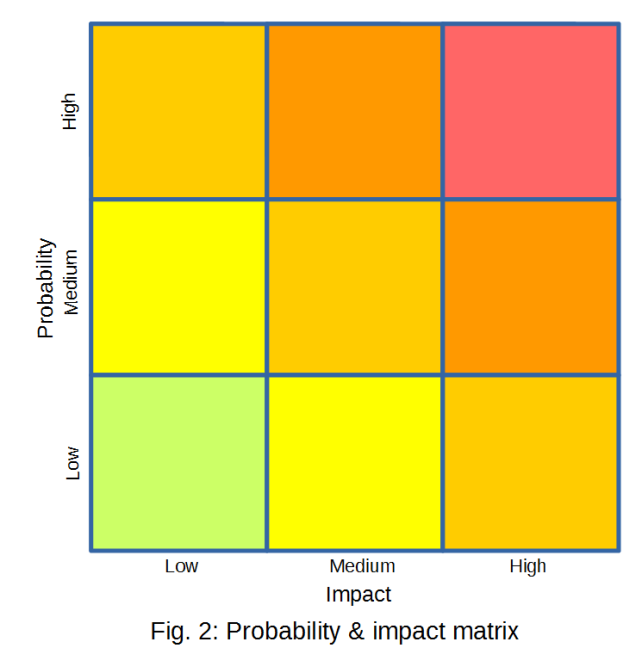This last part of an article first published in the June 2016 issue of the MultiLingual magazine, presents some practical examples of the application of risk management policies in the language industry.
Some practical examples
A few concrete cases are included here as example of risks to be found, as well as their possible remedies. Non-linguistic examples have been selected, as experience shows that people in the language industry tend to overemphasize the linguistic aspects of life.
Area: Commercial / marketing
Risk: A new client request comes from a scammer
Remedy: Scams are a typical case for avoidance. Check the fraud-prevention information available at http://www.proz.com for a comprehensive coverage, but in a nutshell you should possess a general knowledge on how scammers work, always request verifiable contact information from any possible client or provider, and take steps to verify those details yourself.
Area: Commercial / marketing
Risk: A key client goes bankrupt, damaging your business
Remedy: To reduce the probability, keep an eye on signs of impending problems within the customer (comments from the client, news, social media comments) or lack of client satisfaction (client wants some service you do not provide, comments about your service, quality or prices). To reduce the impact, no single client should represent more than 25% of your work.
Area: Commercial / marketing
Risk: “Feast or famine” market fluctuations can severely affect normal operation
Remedy: Keep money reserves or a line of credit for dry periods. Develop a network of trusted providers to outsource extraordinary peaks of demand. Consider collaborating with colleagues (if you can turn a competitor into an ally, they may also share with you their own overflows).
Area: Infrastructure / technology
Risk: Catastrophic infrastructure failure affecting work and deliveries
Remedy: Create redundancy in your infrastructure. Contact an additional internet provider. Keep an active policy of information backups. Define, in advance, contingency procedures and train your people to follow them.
Area: Infrastructure / technology
Risk: Hostile hacker steals confidential information belonging to your organization or your clients
Remedy: Hire a consultant to devise the technological and procedural tools needed to ensure information security. Train your staff in the corresponding procedures and monitor them.
Area: Project management
Risk: Some critical requirement from the client was not recorded in the scope definition of a project, resulting in low customer satisfaction, rework and negative impact on the time and cost objectives.
Remedy: Scope management is your responsibility. Even if the client failed to communicate a project parameter, you (the language service professional) should have asked about it. Develop a checklist with the elements to consider in all projects (tool requirements, CAT tool analysis, input and output formats, language register, expected audience, requirements for partial deliveries, cultural considerations, etc.)
Area: Project management
Risk: Provider fails to deliver
Remedy: Rely on trusted translators. Keep a strong vendor management policy. Maintain good communication channels with them in order to detect problems as soon as possible. Provide and request feedback. Have backup providers to activate them if the designated one drops from the project.
Conclusions
Risk management is the tool to proactively manage the uncertain nature of life and work, and it should be part of the toolbox of any organization (including unipersonal ones). Consider the simple approach suggested in this note or deliver your own. Risk awareness and preparation, sensible processes and a focus on learning lessons from errors and problems should be part of any definition of professionalism.
This article first appeared in the June 2016 issue of MultiLingual magazine. Reproduced with permission.





